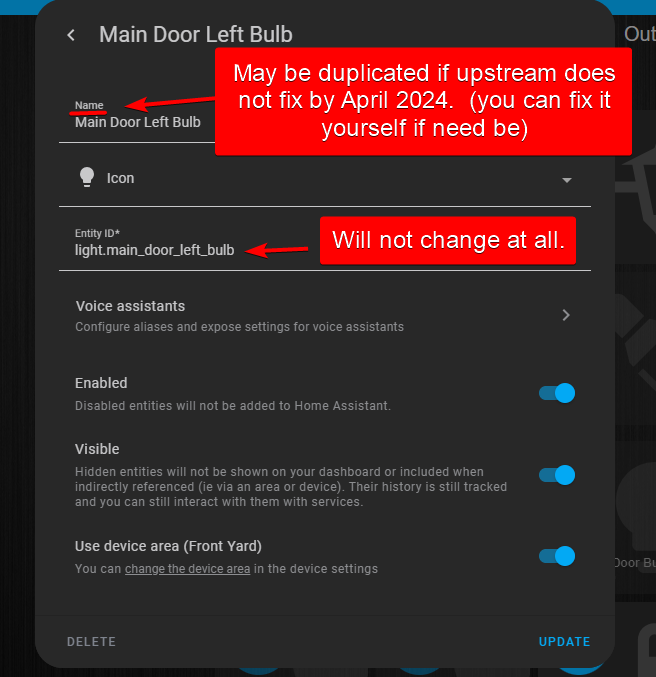I’ve read extensively about that, and this thread was very helpful, and my understanding is that’s still not really a DRS equivalent, but more of a recovery mode: https://forum.proxmox.com/threads/ha-cluster-resource-scheduling-filling-in-the-missing-pieces-from-the-docs.139187/
surfrock66
- 9 Posts
- 53 Comments
Where do you see the load balancing feature? Searching for exactly that was what got me to ProxLB. I have HA groups and fences, but that’s less resource allocation than failure resolution in my experience. My cluster is 8.2.7.
I posted to the forums, but I got a “YMMV” kind of answer; the docs say it’s technically unsupported: https://pve.proxmox.com/pve-docs/chapter-qm.html#_requirements
The hosts have CPUs from the same vendor with similar capabilities. Different vendor might work depending on the actual models and VMs CPU type configured, but it cannot be guaranteed - so please test before deploying such a setup in production.
I’m setting the CPU Type to x86-64-v2-AES which is the highest my westmere CPU’s can do. I have a path to getting all 3 nodes to the 6525 hardware, pending some budget and some decomm’s at work.
I’m battling this right now; it SHOULD work but does not work consistently. Again, homelab, not ideal environment. I’m going from 2 R710’s with Xeons to a 3-node cluster with the 710’s and an EPYC R6525. Sometimes VM’s migrate fine, sometimes they hang and have to be full reset. Ultimately this was fine as I didn’t migrate much, but then I slapped on a DRS-like thing, and I see it more. I’ve been collecting logs and submitting diagnostics; even pegging the VM’s to a common CPU arch didn’t fix it.
To that end, DRS alternatives are still mostly plugins. This was the go-to, but then it was abandoned:
https://github.com/cvk98/Proxmox-load-balancer
And now I’m getting ready to go deeper into this, but I want to resolve the migration hangs first:
I think you are looking at this wrong. Proxmox is not prod ready yet, but it is improving and the market is pushing the incumbent services into crappier service for higher prices. Broadcom is making VMware dip below the RoI threshold, and Hyper-v will not survive when it is dragging customers away from the Azure cash cow. The advantage of proxmox is that it will persist after the traditional incumbents are afterthoughts (think xenserver). That’s why it is a great option for the homelab or lab environment with previous gen hardware . Proxmox is missing huge features…vms hang unpredictably if you migrate vms across hosts with different CPU architectures (Intel -> AMD), there is no cluster-wide startup order, and things like DRS equivalents are still separate plugins. That being said knowing it now and submitting feedback or patches positions you to have a solution when MS and Broadcom price you out of on-prem.
 4·1 month ago
4·1 month agoI have a philosophy of sticking close to reference implementations and upstream in the homelab because it forces me to learn principles rather than implementations. I use bind9, but that upstreams to pihole on a different port. It is hard to configure for sure, editing zone files in vi, but I learn a lot analyzing the reference syntax to understand features. I also use isc-dhcp-server for DHCP, again manually populating dhcpd.conf.
Bind can peer with other instances; right now it is it’s own ipam vm on my proxmox with bind/isc-dhcp/pihole docker, but I’m looking at dropping some hardware at a family member’s for a site 2.
I’m super happy and excited for GIMP 3.0. I hate that this info was presented in a youtube video. I can gleam what I want to know from an article with bullet points (which I could find) but I’m sick of half the information I search for being returned in a video, with a fixed time commitment and imprecise “scrolling” to skip. I feel like in search and link aggregators, more and more content is video instead of text and I’m not here for it.
My setup is a bit extreme, but here are my guardrails:
- All users have the same UID’s on every system. I’m 1000, wife is 1001, son is 1002, daughter is 1003. All these exist on all systems. Our primary group is “family” (gid 10000). Our files are all owned by user:family. This matters because we let them have access to the share of things like home movies and pictures, and I have a TrueNAS with an NFS mount that their user folders rsync to nightly for backup. If you wanna get crazy, you can put in a whole LDAP/freeIPA setup, but that’s a lot (and I did all that as a learning experience).
- They don’t have the account passwords. I have their password, and if they want to use it, the wife or I have to type the password. When we want them off, superkey+L to lock the computer, and if they reboot it comes to a login screen.
- If you really go this route, and go the whole LDAP thing, you can also tie that into apps like Jellyfin. I have a huge library of movies and shows, but there’s a folder called “KidMedia” and I literally manually symlink things to that folder if I want them to have access. I set up the phones/tablet with their own jellyfin accounts, and when they log in they only see their media. I also NFS mount that share, so for the same reason, they can watch stuff on VLC from the computer with access control. We also do that with nextcloud, so we can use nextcloud talk to chat internally. The tablets/phones have built in android controls, so the idea is once they’re on their device, they’re free within the ecosystem I set up and they don’t enter credentials other than device unlock.
I built my kids potato computers from the time they were 3-5, which was during covid. They need computer skills nowadays, and it put them at an advantage for covid school. We got them on java Minecraft which was huge for reading, typing, and some basic math skills (they figured out multiplication for crafting things like doors). I made a chart which had icons of things they want, with the word next to it, so they could search and type in creative.
We used Ubuntu Mate. It’s simple, stable, and familiar. They do NOT have sudo on these boxes. As we’ve advanced, they now have firefox (behind a pihole which upstreams to opendns’ family protect), gimp (with a wacom tablet!), inkscape, calculators, tenacity, libre office, and they’re starting to get into some cad to make things to 3d print. You have to come to terms with doing a LOT of patient hand holding, but it has paid off dividends.
We tried to host it ourselves to save cost, and it’s a beast but it mostly works. It certainly lags behind in features and uses a lot of resources, but when you compare with the cost it’s certainly passable.

 25·7 months ago
25·7 months agoLego parts are incredibly precise, and the manufacturing tolerances have been consistent for decades. It’s nearly impossible to replicate that precision on any modern printers.
That being said, different parts are more tolerant of wiggle room. Grabbing a stud is hard, grabbing a 2x4 is not. If you were going to print a minifig head, trying to replicate the neck barrel is gonna be tough, but making a larger hole with 2-3 ridges which taper to grip might be easier. If you plan what you’re doing and are realistic about what you can print, it’s definitely not out of the question.
Lego is ABS if I’m correct.
Neo Launcher, available in the IzzyOnDroid F-Droid Repo, has been my solid go-to for replacing Nova.
https://github.com/NeoApplications/Neo-Launcher
I prefer a ton of icons/folders/widgets on my home screen, and it supports that dense layout.

 1·9 months ago
1·9 months agoIt’s a lot for the homeland, but I love zabbix

 6·9 months ago
6·9 months agoI think the local copy I have (on a literal old samsung S3) is the same as what is downloaded from here, with the game cache files: https://sbenny.com/games/puzzle-quest-2.html
I was NOT able to make that work on my current OnePlus, even with the cache files. It fails a validation check on launch.

 8·9 months ago
8·9 months agoI would greatly appreciate that

 11·9 months ago
11·9 months agoFair, my home office is a monument to too much free time, a hoarding habit for ewaste, and a wife who works weekends and overnights.

 3·9 months ago
3·9 months agoThat is a self-made soldering kit box I made when I was in college and had to haul it around a lot. I have actually been meeting to replace it with something more permanent now that I’m a grown up with my own house. I have an air flow soldering rig which doesn’t really have a home, and I could have a much better use of space. I have my brocade ICX6610-24 next to that which I’ve been programming for way too long, and a whole bunch of 3D printer parts on top of that.

 3·9 months ago
3·9 months agoI’ve done some of that, recently I have an old putty knife and I will put it right against the crack and just hammer it which will unstick it enough that I can pull it off. Newer drives definitely have weaker magnets than some of my much older ones.

 7·9 months ago
7·9 months agoI started collecting in probably 2007, so manufactured before that for sure.

 17·9 months ago
17·9 months agoThat’s rad, and you did an amazing job keeping them whole. Recently I have been wrapping them in cloth, then the kids form clay around them for various fridge and office magnets.









This may not be exactly what you want, but I use Apache guacamole for this. The client becomes a web browser, and a chromium based browser allows seamless bidirectional clipboard. I use Ubuntu VMs with Mate as the DM and with a few keybinds tweaked it is solid. I use tightVNC as my server which supports dynamic resize, and the soon to be released guacamole 1.6 supports sending dynamic resize (since the underlying libraries are now updated to support it; RDP in guac already supports dynamic resize). How performant is it? I have a single proxmox vm which runs 3 Minecraft instances for our server’s 3 bot accounts (which just stand still) and the desktop is still navigable.